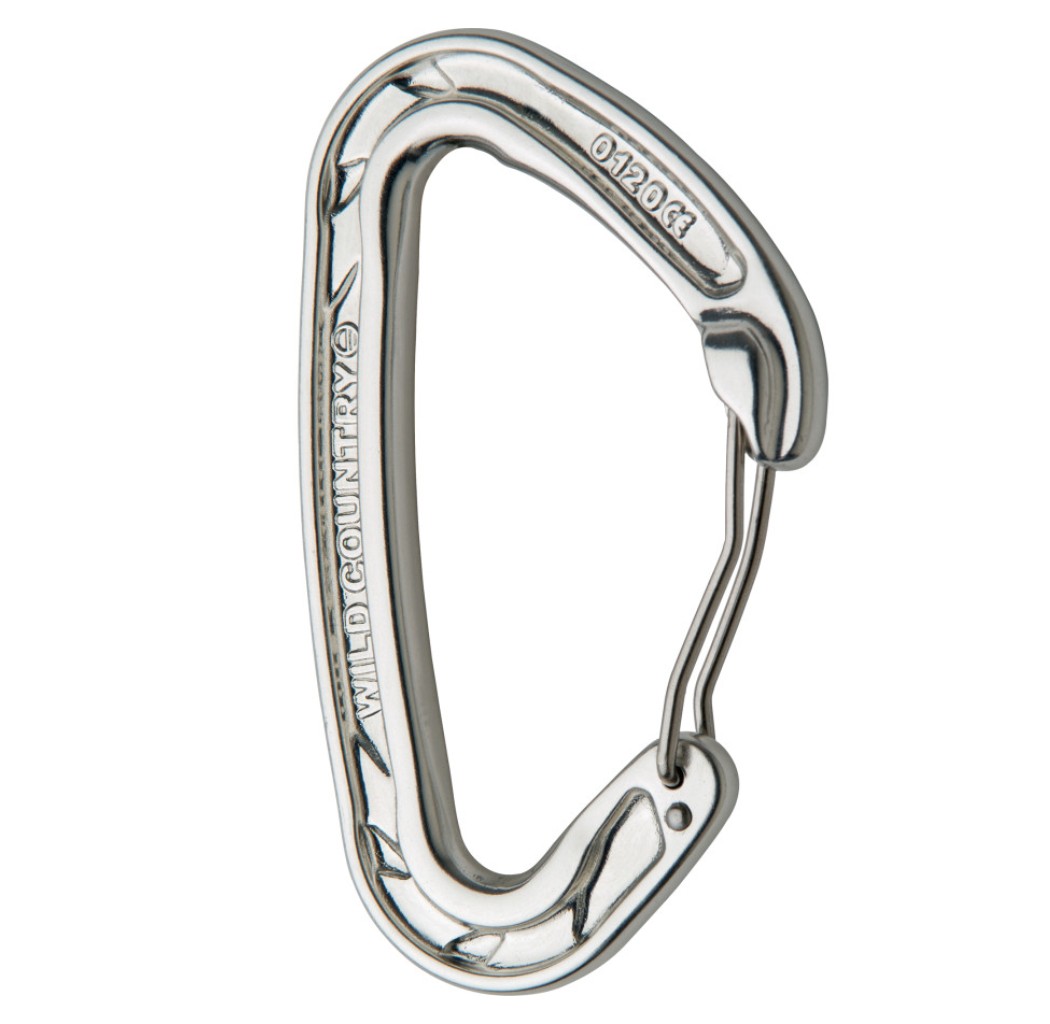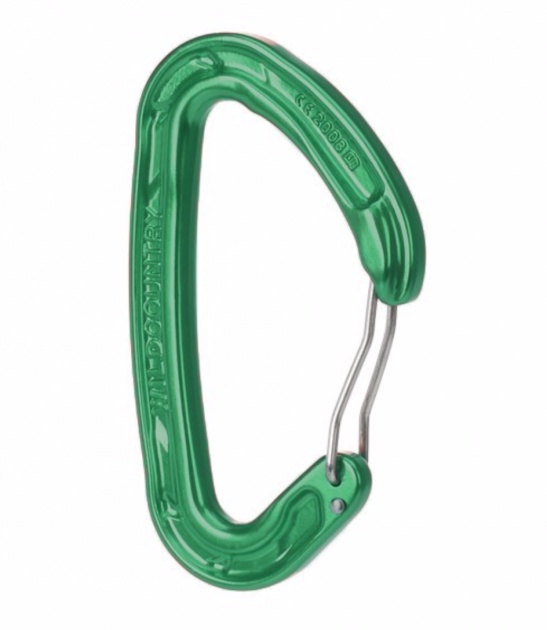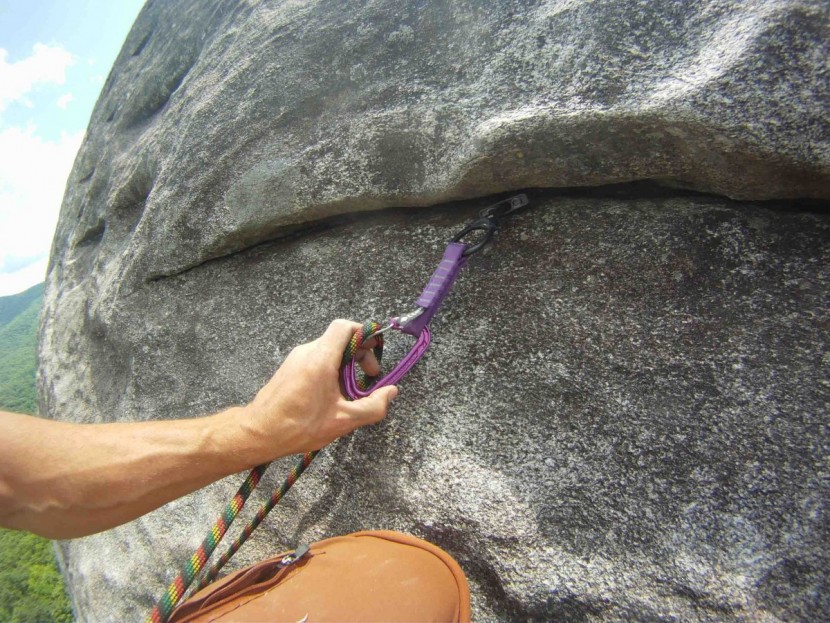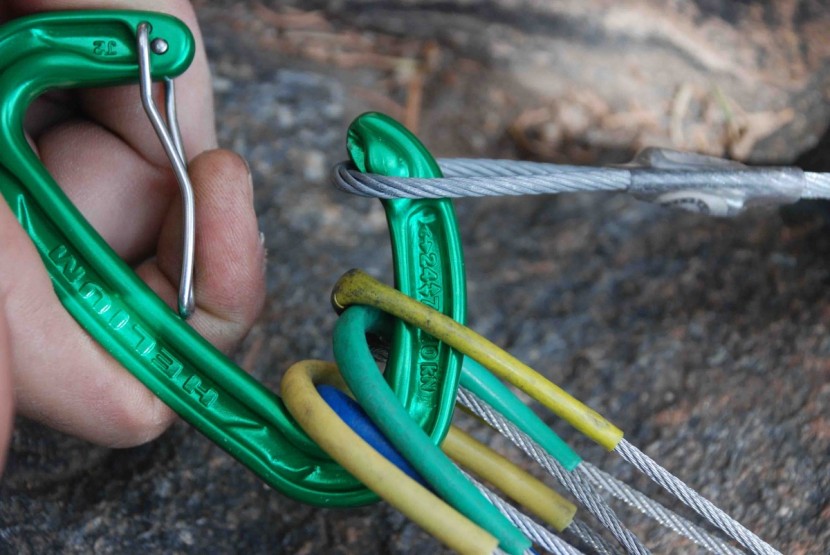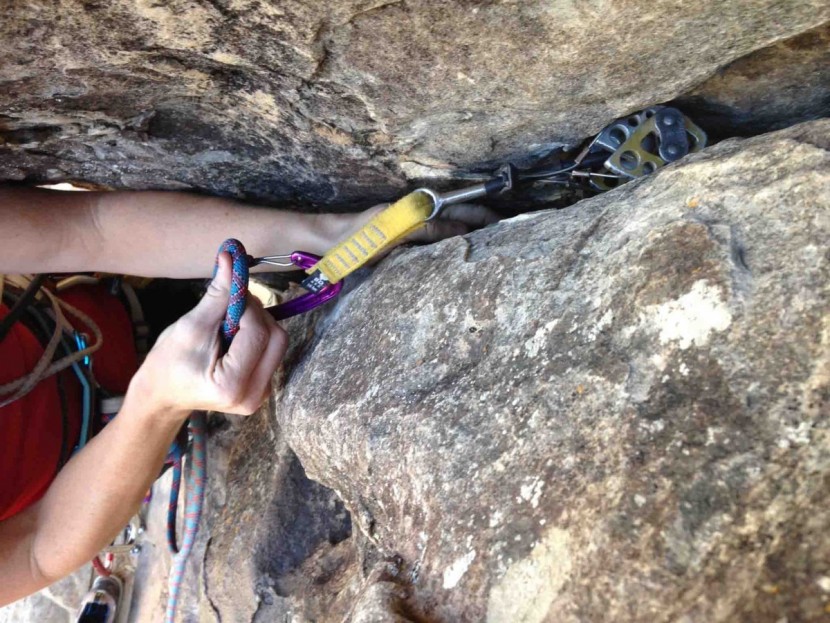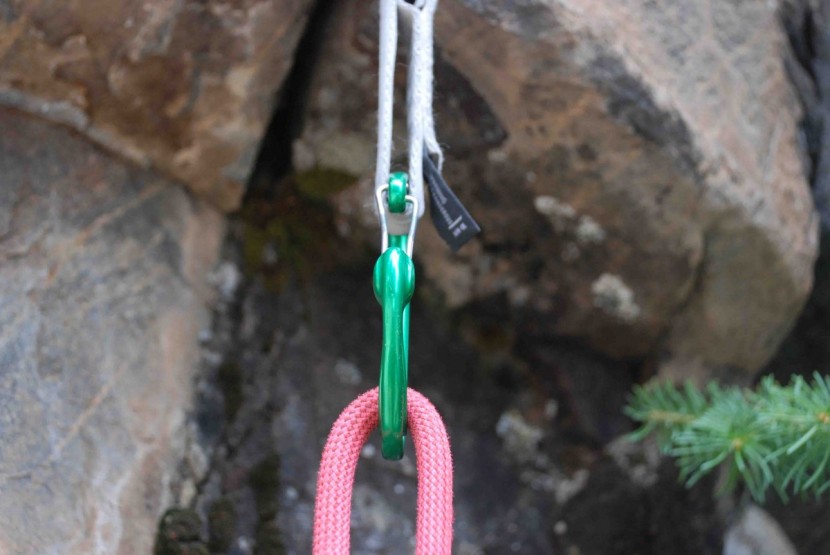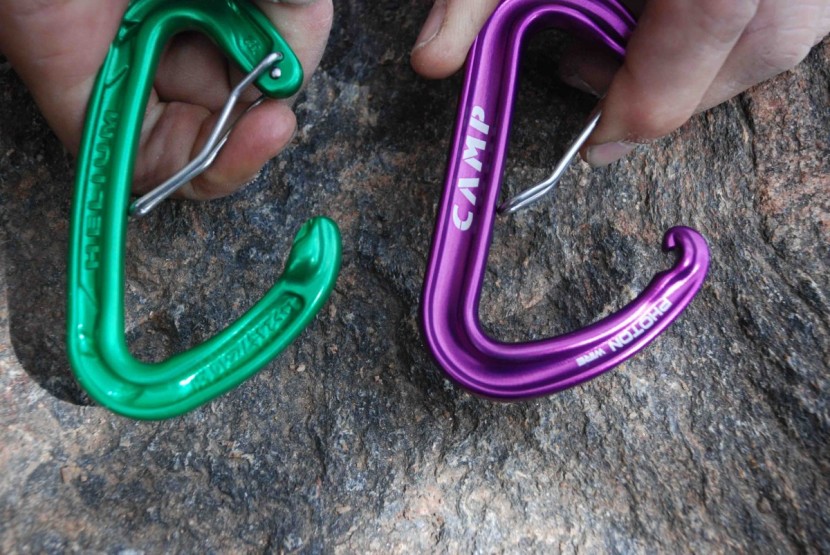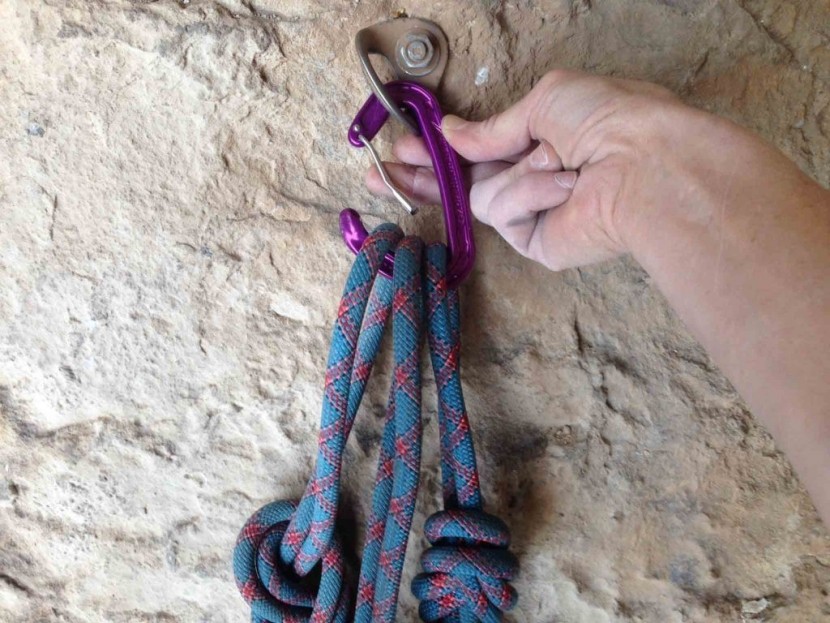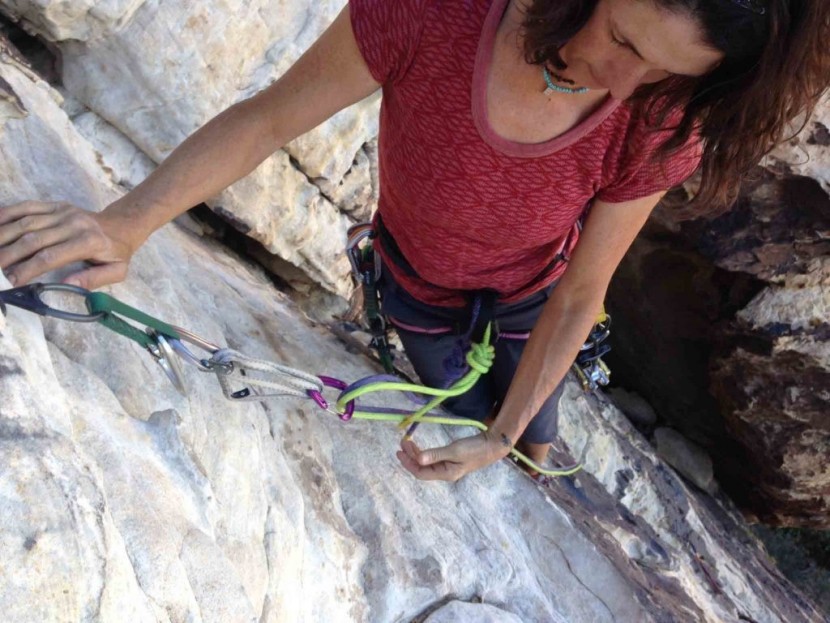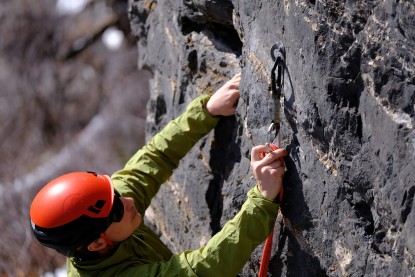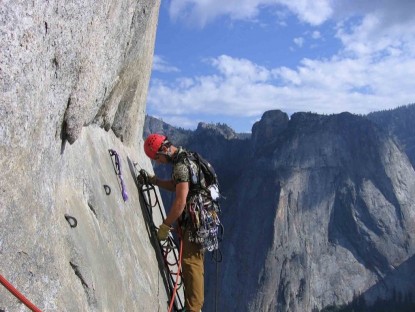Wild Country released the an updated version of this carabiner called the Helium 3. We show a comparison below.
March 2020Wild Country Helium Carabiner Review

Our Verdict
Our Analysis and Test Results
Helium Updates
Since our test period, Wild Country updated our Editors' Choice winning carabiner to the Helium 3. The “clean lock” wiregate nose has been redesigned to provide greater security. The updated biner weighs 38g, compared to the 33g of the previous model. The new model is shown in green below, next to the model we tested.
Hands-On Review of the Helium
The Wild Country Helium is a hot-forged wiregate carabiner. It weighs 33 grams (1.16 ounces) and has a 27 mm gate opening.
Ease of Unclipping
Our testers gave the Helium the highest score for unclipping. It has a “clean nose” profile, where the notch on the wiregate is buried in the nose. Most wiregates have an exposed notch in the nose that the wiregate latches on, which can also snag on your gear. With the clean nose, the Helium will never snag on your rope, nuts, or slings, or get hung up on a bolt.
This is one area where our Editors' Choice winner gets ahead of the competition. The CAMP Photon Wire has a similar gate opening and size, but it still has an exposed notch that can snag on your gear. We tested some other carabiners with a clean nose, including the DMM Alpha Light, and the Black Diamond Oz Carabiner, which has a stainless steel wire hood over the nose. Both of those models are a little smaller though, which makes them slightly harder to unclip.
Ease of Clipping
This full-size carabiner is easy to clip, even with gloves on, and it received top marks for this metrics as well.
We found that is clipped similarly to the CAMP Photon Wire mostly because they are a similar size. The tension on the Helium's gate seems a little bit tighter than the CAMP Photon Wire though, but wasn't as stiff as the Mad Rock Ultra Light. Too stiff and the carabiner is hard to clip, but too soft and the carabiners might clip onto each other when crowded on a harness or gear sling. There's nothing more annoying than reaching for a certain camming device only to find that it has become intertwined with the piece next to it.
Ease of Handling
This model earned high marks in ease of handling as well. The nose on the Helium is a little bulbous since it houses the notch for the wiregate. There are benefits and downsides to this design in terms of ease of handling.
The main benefit is that the nose protects the gate and takes most of the wear. With the Helium carabiners that we tested, a lot of the anodized color on the top and sides of the nose scraped off after only three months of use. This shows us that it is the nose that is actually coming into contact with and scraping against the rock, and not the gate. In the case of other wiregates, like the CAMP Photon Wire, it's the reverse. The problem with a gate scraping against the rock is that it could cause the gate to open, or weaken the wire itself.
The drawback to this nose design is that it has a much bigger profile and is more difficult to fit into tight situations, like some anchor chains or fixed gear. While the safety gains of a protected gate might outweigh the inconvenience caused by its size, it did make it a little less easy to handle than the CAMP Photon Wire.
How Many Ropes Fit
Like most of the full-size models we tested, this one scored very well in this category. It can hold three loops of 10 mm rope and still have the gate open fully, thanks to its deep basket and 27 mm gate opening.
Some carabiners, like the Black Diamond Neutrino (22 mm) and CAMP Nano 22 (21 mm) have smaller gate openings, and those do not make a good choice for anchoring at a belay. But our Editors' Choice winner could accommodate three strands with room for more. This would also be a good carabiner to carry lots of webbing or a cordallete on. It easily accommodated our twin 7.8 mm ropes, and you could also clip two 10 mm ropes into it like you might do if you were climbing with a party of three.
Rope Pull Smoothness
This carabiner has a slight groove in its basket, which helps direct the rope to pull along the main axis in case of a fall. Whether this helps or hinders the smoothness of the rope pulling through the carabiner is hard to say. Most of the models that we tested scored well in this category, with the exception of the smaller “keychain” models due to their narrower rope bearing surface. In general, a wider rope bearing surface equals a smoother pull and less wear on your rope when taking falls.
Portability
Neither the Wild Country Helium (33 grams) nor its full-size competitors won this category. The CAMP Nano 22 Carabiner (22 grams) and Metolius FS Mini II (25 grams) were the lightest models that we tested. Our Editors' Choice is a pretty light carabiner by most standards, but compared to the Nano 22, it's a heavyweight.
Think of this - for every two Heliums on your rack, you could have three Nanos for the same weight, and 20 Nanos weigh half a pound less than 20 Heliums. But weight is one factor, and usability another. In the case of the Wild Country model, that extra half a pound gets you a more workable and versatile piece of gear that you can use in all disciplines. If lightening your load if your ultimate goal though, then it's hard to argue against the Nano 22.
Best Applications
In general, a wiregate is preferred over a solid gate if you ice climb or use your gear in cold conditions as they are less prone to icing up. We weren't able to test these in the snow in our updated review (it took place mostly in Las Vegas in the spring and summer); however, our testers wondered if the fancy nose design on this carabiner wouldn't clog up with snow or ice and impede the latch.
For most types of climbing, our Editors' Choice winner would be our testers' first choice over models like the CAMP Photon. It has a higher strength rating than most of the lightweight carabiners we tested, which makes them strong enough to use on quickdraws and take repeated sport climbing falls on. It also comes in five different anodized colors to match up with your camming devices, and their slim profile means you won't end up with a bulky rack. You could also use one to rack your nuts on, and wouldn't have to worry about the wires getting snagged.
Value
There's no question that this model has a distinct sticker shock factor. You might hope that the number on the tag is for two carabiners, but no, it's just for one. And you can buy two of our Best Buy award winner, the Mad Rock Ultra Light, for the same price as one Helium! So, if you are on a budget, or new to climbing and not even sure if this is the sport for you, consider the Ultra Light instead. If you covet this Wild Country model and can't bring yourself to pay full price, bide your time and shop the sales. Every now and then a few dollars gets knocked off the price, bringing them back into a reasonable range, and they are also sold in a five-pack for a (slightly) reduced price. You can also comfort yourself with the knowledge that not only are these carabiners CE an UIAA certified, but 3 Sigma rated, a rigorous standard of quality control.
Conclusion
Throughout our review, the Helium impressed all of our testers. Not only did it earn high scores in most of our metrics, but it was also the preferred choice when we just sat back and thought about which product we'd like to buy (if money were no object, of course). Its snag-free design, protected wiregate, and sturdy construction are what vaulted this carabiner to the top of the podium. Still not convinced? Buy one or two of these and start using them with your other gear. Pretty soon you'll be starting a savings fund to replace the rest of your rack with them. We know we are.


